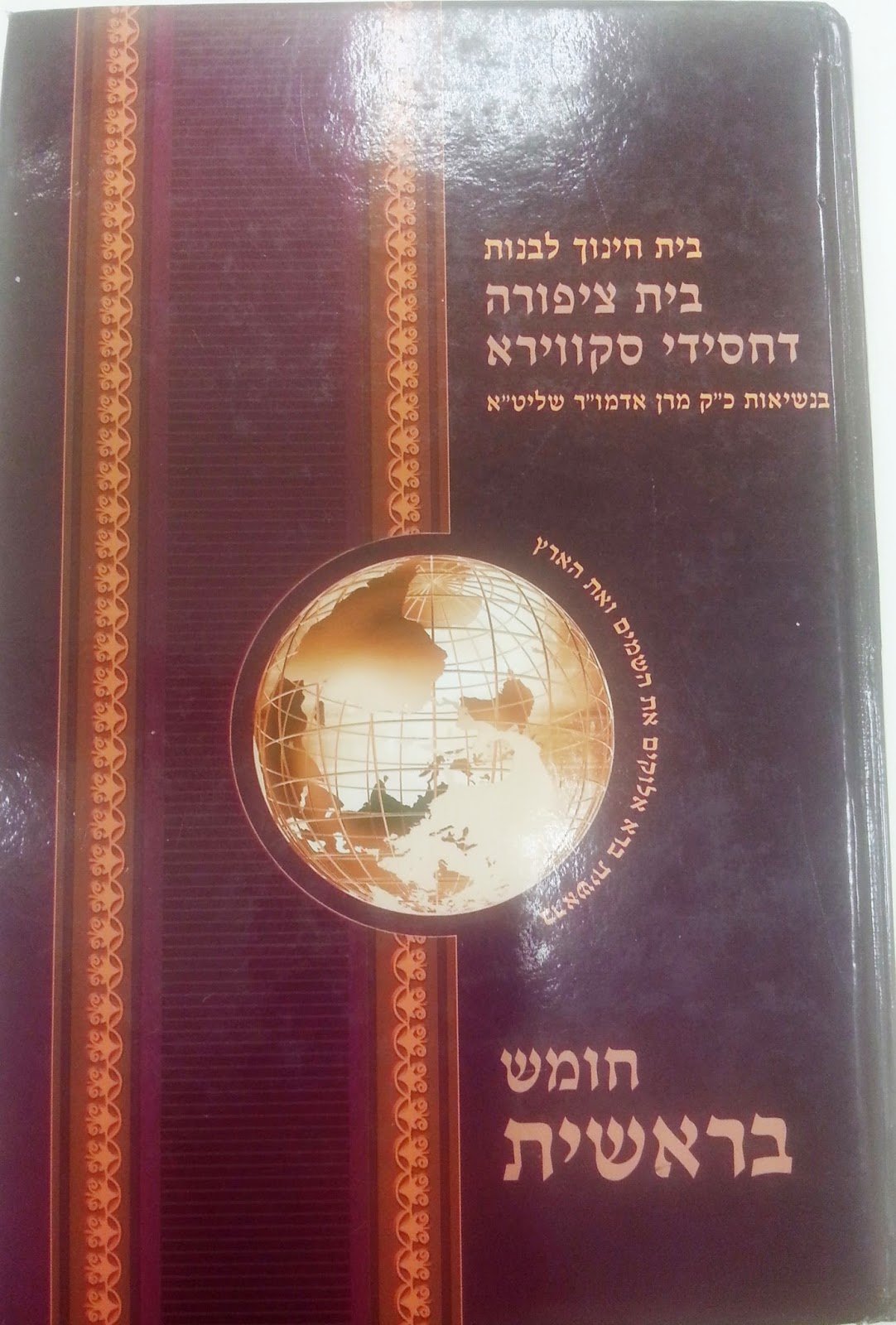On today’s page of Talmud, Rav reports several aphorisms said by Adda the Fisherman. Here is one.
מועד קטן יא, א
אָמַר רַב: אֲמַר לִי אַדָּא צַיָּידָא, כְּווֹרָא סָמוּךְ לְמִיסְרְחֵיהּ מְעַלֵּי
Rav said: Adda the Fisherman told me that a fish that has sat for some time and is close to spoiling is at its best.
And so according to Adda, fish is not at its best when it is fresh. In fact, it is best eaten just before it spoils. Tosafot is surprised at this advice, and notes that eating fish (or any food) close to its expiration date is a dangerous thing to do. Tosafot raises the possibility that perhaps that kaverah (כְּווֹרָא) does not mean fish in general, but instead refers to a specific species of fish, named kaverah. However Tosafot rejects this solution, and instead suggests a different one. “Perhaps, nature has changed.” It is also for this reason, Tosafot notes, that the medicines suggested in the Talmud are no-longer effective. They once were of course, but nature has changed.
כוורא סמוך למסרחיה מעלי. ובזמן הזה תופסים סכנה למיכל סמוך לסירחון וגם משתי עלה אבוה דאמר בסמוך דמעלי ושמא נשתנו כמו הרפואות שבש"ס שאינן טובות בזמן הזה או שמא נהרות דבבל מעלו לו טפי ויש מפרשים דכוורא לא בכלל דגים מיירי ושם דג ששמו כוורא ומשונה בדברים האלו משאר דגים כדאמרינן פ' כל הבשר (חולין דף קט:) אסר לן גירותא שרא לן לישנא דכוורא ואין נראה שיהא בכל הלשונות של דגים טעם אחד
ANOTHER Example
In Avodah Zarah (24b) the Talmud states that a cow or donkey less than three years old cannot conceive. Once again, Tosafot notes that this claim is factually incorrect:
תוספות עבודה זרה כד, ב
פרה וחמור בת שלש שנים ודאי לכהן - פי' דקודם שלש ודאי לא ילדה ויש לתמוה דהא מעשה בכל יום דפרה בת שתי שנים יולדת וי"ל דודאי עתה נשתנה העת מכמו שהיה בדורות הראשונים
…this is surprising, because we see that each and every day that a two-year-old cow does in fact give birth! Perhaps this is because the times have changed, and are things are not as they were for earlier generations…
The Chazon Ish on Nature and its Changes
There are many examples of this explanation being used. Here, is one given by the great Chazon Ish, Rabbi Avrohom Yeshaya Karelitz (1878-1953). The Talmud (Yevamot 42) states that a baby born after eight months of gestation will not survive, but one born after seven or nine months will. (We have discussed this is detail elsewhere.) Not so, said the Chazon Ish. A baby born after eight months can indeed survive. “It seems to me” he wrote, “that nature has changed” and therefore the Sabbath may indeed be broken in order to save the now viable life of such a child.
155 חזון איש - יורה דעה
יש שטועין וסוברים דהנולד קודם ט' הוא נפל ומתיאשין הימנו ואינם זריזין ברפואתו, וזו טעות... וחייבים להשתדל ברפואתו... בימים הראשונים הי' מיעוט המצוי שנגמרו לז', ורובן לתשעה, אבל לא היו נגמרין לשמונה, ולפיכך אמרו האי בן שבעה הוא ואשתהי, וכמדומה דעכשיו נשתנה הטבע, וכפי בחינת הרופאים, אפשר שהוסיפו השתלמותם אחר ז' ונגמרו לח', והרי נשתנו הטבעים ללדת למקוטעין, כמ"ש הרמ"א
In his 2013 book Torah, Chazal and Science, - Rabbi Moshe Meiselman is certain that natural changes are the reason that things the rabbis said then are not correct today:
Chazal were describing realities that they lived with on a daily basis. They were not ivory-tower academicians making armchair speculations. They had firsthand knowledge of both human and animal reproductive cycles. They had firsthand knowledge of animal anatomy. If our observations do not always match theirs, it is clearly because the realities have changed.
As long-time readers of Talmudology will realize, this statement is incorrect. The fact that the rabbis of the Talmud made first hand observations does not make these observations correct. To choose but one, rather obvious example, the sun looks like it rises every day in the east, and it certainly feels like the earth is not moving. But in reality is is the earth that is moving, and the sun is stationary, at least with reference to the earth. Here are some other examples of things that certainly looked correct to the sages of the Talmud, but are in fact incorrect:
In all of these instances, Rabbi Meiselman, and others who claim that the rabbis of the Talmud were never wrong about anything, suggest that these were in fact correct statements, only the world has changed in such a way that they are no-longer true. There is a long Jewish tradition of believing the sages of the Talmud incapable of error. Here for example is the Rashba, Rabbi Shlomo ben Avraham ibn Aderet (1235-1310), a favorite of Rabbi Meiselman, for reasons that will be quickly apparent.
ויבטל המעיד ואלף כיוצא בו ואל תבטל נקודה אחת ממה שהסכימו בו חכמי ישראל הקדושים הנביאים ובני נביאים ודברים שנאמרו למשה מסיני
It is better to deny the truth of one person - or one thousand like him, rather then deny one tiny part of that which the holy rabbis have agreed upon, for they are like prophets and are descended from prophets, and their words were revealed to Moshe at Sinai.
I suppose you could believe that, but how about a much simpler suggestion: They were wrong, but (usually) were no more wrong than anyone else at the time. There is of course much more to be said about this (and here is a book with many more examples of the phenomenon). But here is an excerpt from Judah Landa’s excellent 1991 book Torah and Science, still one of the best books on the topic (but not the best). Landa (p. 348) bemoans the fact that a number of Jews have “strayed from the Orthodox path as a result, at least in part, of the widespread misconception that an unmitigated conflict exists between the fundamental principles of Judaism and science.” And then comes this:
This misconception has been aided and abetted by the stubborn insistence on the part of many of our brethren in the Orthodox community that the sages were infallible and incapable of error. even in matters that are outside the domains of Torah. This leads to the rejection of any and all scientific principles, no matter how well supported by the evidence, that contradict the expressed opinions of the rabbis. The highly visible achievements of science stand in stark contrast to these dogmas that have been turned, by thoughtless and repeated insistence, into new pseudo-tenets of the faith. These dogmas have gone unchallenged, for too long a time, from within the Orthodox community. It is time that this misrepresentation of what is and is not inherent to Judaism be rectified.
For some Jews, a belief in the absolute infallibility of the sages is central. Their religious worldview would be shaken and left in tatters if that belief was challenged. Others, no less fervent in their Jewish commitment, seem to be just fine, thank you very much, with the belief that the rabbis of the Talmud provide us with much wisdom and guidance, but hey, every now and again they made some mistakes. Where are you on this spectrum, and why?









